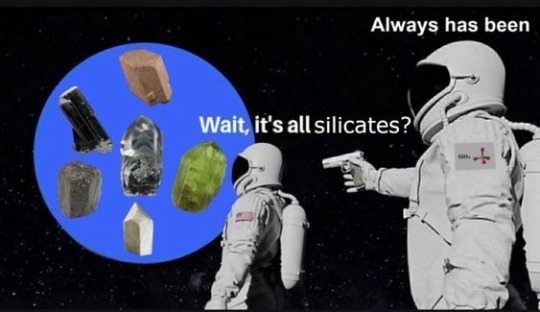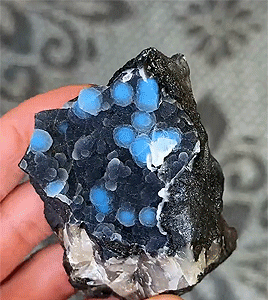#silicates
Explore tagged Tumblr posts
Text

101 notes
·
View notes
Text

53 notes
·
View notes
Text
[touches "protected article" icon] something terrible happened here...

2 notes
·
View notes
Text







remember that black coffee is actually stronger so dont drink more than two cups at a time unless you have experience i am literally shaking but yes incase you already drank more than two cups then you should put on music and spin in circles its really fun
#the void does not consume me i consume the void#i hate feeling this way#silicates#actually#tw#me when#reject brainrot#i hate boyfriends#airplane#politics#green tea#newjeans#kawaii#i hate everyone
2 notes
·
View notes
Text
the cruncher
youtube

1 note
·
View note
Text


💎 shiny rocks make brain go brrrr ✦ shattuckite [x]
#crystals#minerals#shattuckite#blue#another new one to me! it's a copper silicate. just lovely. uwu#the name comes from the mine where it was discovered!#forbidden blueberries#✦ gifs
494 notes
·
View notes
Text

The Silicate Garden
"A chemical reaction creates colorful growths with a remarkably organic appearance (hence the "garden" name). The process is similar to crystallization, but in contrast to ultra-orderly crystals, this is a self-organizing non-equilibrium process that creates complex structures."
35 notes
·
View notes
Text










Yellowstone National Park, WY (No. 23)
Yellowstone is at the northeastern end of the Snake River Plain, a great bow-shaped arc through the mountains that extends roughly 400 miles (640 km) from the park to the Idaho-Oregon border.
The volcanism of Yellowstone is believed to be linked to the somewhat older volcanism of the Snake River Plain. Yellowstone is thus the active part of a hotspot that has moved northeast over time. The origin of this hotspot volcanism is disputed. One theory holds that a mantle plume has caused the Yellowstone hotspot to migrate northeast, while another theory explains migrating hotspot volcanism as the result of the fragmentation and dynamics of the subducted Farallon Plate in Earth's interior.
The Yellowstone Caldera is the largest volcanic system in North America, and worldwide it is only rivaled by the Lake Toba Caldera on Sumatra. It has been termed a "supervolcano" because the caldera was formed by exceptionally large explosive eruptions. The magma chamber that lies under Yellowstone is estimated to be a single connected chamber, about 37 miles (60 km) long, 18 miles (29 km) wide, and 3 to 7 miles (4.8 to 11.3 km) deep. The current caldera was created by a cataclysmic eruption that occurred 640,000 years ago, which released more than 240 cu mi (1,000 km3) of ash, rock and pyroclastic materials.This eruption was more than 1,000 times larger than the 1980 eruption of Mount St. Helens. It produced a caldera nearly 5⁄8 mi (1.0 km) deep and 45 by 28 miles (72 by 45 km) in area and deposited the Lava Creek Tuff, a welded tuff geologic formation. The most violent known eruption, which occurred 2.1 million years ago, ejected 588 cu mi (2,450 km3) of volcanic material and created the rock formation known as the Huckleberry Ridge Tuff and the Island Park Caldera. A smaller eruption ejected 67 cu mi (280 km3) of material 1.3 million years ago, forming the Henry's Fork Caldera and depositing the Mesa Falls Tuff.
Source: Wikipedia
#Black Opal Pool#Midway Geyser Basin#Sapphire Pool#Yellowstone National Park#fauna#flora#travel#original photography#vacation#tourist attraction#landmark#landscape#countryside#subalpine forest#USA#summer 2024#Wyoming#UNESCO World Heritage Site#geothermal feature#geology#Yellowstone Plateau#Rocky Mountains#siliceous sinter#geyserite#Teton County#Upper Geyser Basin#Biscuit Basin Trail#Silver Globe Geyser Complex#Wall Pool#Firehole River
16 notes
·
View notes
Text

Why choose between who to ship who with when you can just make them all a polycule
#do they have a name#I don't think zane exactly knows his sexuality but if asked he'd say bi bc it's what makes the most logical sense#if they don't ld like to propose amethystshipping#bc... purple rock... that produces electricity when pressure is applied#and silicates like quartz are used in microchips#also you should read the fanfiction my friend meavaly made that's mildly related to this on AO3 called we just laugh#ninjago#zane ninjago#zane julien#pixal ninjago#pixal borg#ninjago pixal#pixane#cole bucket#cole hence#cole brookstone#cole ninjago#glacier ninjago#glaciershipping#geo ninjago#geode ninjago#geodeshipping#lostshipping#lostshipping ninjago
49 notes
·
View notes
Text

Felt like giving her something casual
18 notes
·
View notes
Text
trouble differentiating sulfite and sulfate? got a problem with halogenides? just rely on your DEAR OLD FRIEND KALIUMPERMANGANAT, THE ONE WHO DOES IT ALL!!!
No reducing substances in my sauce no sir no sir we got sulfate in this house 🫡
#feli speaks#uni posting#choosing to believe i only have 3 anions bcuz i dont want to fucking do silicate#and also someone just. stole?? my borat proof?? SOMEONE JUST STOLE MY BORATE PROOF??? WHERE IS MY PORCELAIN BOWL. WHERE IS IT.
7 notes
·
View notes
Text
Happy new year India! :D
May this year bring you more silly and cake
#Silly cake#Silicake#Silicate#I FIGURED UT OUT! WE MUST EAT SILICATE!!#don't try this btw#Silica gel is non toxic but it can block stuff
9 notes
·
View notes
Text
Cursed DametaGala interaction that just popped into my head.
Galacta Knight: Hast thou been scratching again?
Dark Meta Knight: ...Maybe. Why?
Galacta Knight: There's glitter everywhere.
#I headcanon DMK as a silicon lifeform#Mica is a silicate mineral that shimmers#ergo if DMK had dandruff/shed hair it would glitter#galacta knight#dark meta knight#dametagala
28 notes
·
View notes
Text
We need a new longest word. I like pneumonoultramicroscopicsilicovolcanoconiosis as much as the next guy, but it's less fun when you learn it describes a painful disease
#pneumonoultramicroscopicsilicovolcanoconiosis#linguistics#sorry to complain about something and then tag it with that thing#the pneumonoultramicroscopicsilicovolcanoconiosis fandom will not be happy with me#theyre gonna expose my voodoo doll to very fine silicate dust
6 notes
·
View notes
Text
50 Million Years of Climate Change with Christina!
Have you ever thought about how dinosaurs lived on a warm, swampy Earth and how we live on one that’s cold enough to keep pretty much the entirety of Greenland and Antarctica buried under kilometers-thick sheets of solid ice and wondered, hmm, how did we get from there to here? The short answer is that it took 50 million years of declining atmospheric carbon dioxide concentrations and dropping temperatures, not to mention building an ice sheet or two. For the longer story of the last 50 million years of climate change, including some of the reasons why, catch this episode of our podcast with Dr De La Rocha! You’ll hear about plate tectonics and continental drift, silicate weathering, carbonate sedimentation, and the spectacular effects the growth of Earth’s ice sheets have had on Earth’s climate. There are also lessons here for where anthropogenic global warming is going and whether or not its effects have permanently disrupted the climate system. Fun fact: the total amount of climate change between 50 million years ago and now dwarfs what we’re driving by burning fossil fuels, and yet, what we’re doing is more terrifying, in that it’s unfolding millions of times faster.
Bonus content: If you want to see sketches and plots of the data discussed in this episode, you can do so here!
!!Nerd alert!!
If you're interested in the primary scientific literature on the subject, these four papers are a great place to start.
Dutkiewicz et al (2019) Sequestration and subduction of deep-sea carbonate in the global ocean since the Early Cretaceous. Geology 47:91-94.
Müller et al (2022) Evolution of Earth’s plate tectonic conveyor belt. Nature 605:629–639.
Rae et al (2021) Atmospheric CO2 over the last 66 million years from marine archives. Annual Review of Earth and Planetary Sciences 49:609-641.
Westerfeld et al (2020) An astronomically dated record of Earth’s climate and its predictability over the last 66 million years. Science 369: 1383–1387.
Connect with Christina at her blog, on Twitter, and on Mastodon
Support the show on Patreon or make a one-time donation via PayPal.
#climate change#solarpunk presents podcast#ice sheets#climate#plate tectonics#continental drift#silicate weathering#carbonate sedimentation#anthropogenic global warming#global warming#climate system#science
11 notes
·
View notes